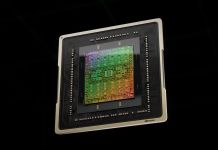The market for flash memory is hotter than ever and the development is moving forward at an almost unhealthy pace, both to increase capacity and performance, but also to lower costs. Intel and Micron has now presented a great leap in flash-based storage, namely TLC-NAND or Tripel Level Cell.
TLC simply means that each memory cell can store three bits of data instead of two (MLC) or one (SLC). Together with 25nm manufacturing technology these new memories will be capable of much higher capacities at the same cost as previous technologies. This will contribute to lower manufacturing costs and in the end lower prices for us, the buyers.
{youtube}wOLkEfGT7XM{/youtube}
TLC-flash will be used in USB memories and integrated units such as smartphones and media players. Micron is already planning micro-SD cards with 64GB capacity thanks to TLC-flash.
Intel Corporation and Micron Technology Inc. today announced the delivery of 3-bit-per-cell (3bpc) NAND flash memory on 25-nanometer (nm) process technology, producing the industry’s highest capacity, smallest NAND device. The companies have sent initial product samples to select customers. Intel and Micron expect to be in full production by the end of the year.
It will not be using TLC-flash in SSDs. The reason is simply that TLC is too slow to be interesting for SSDs. Another reason is that TLC can’t do nearly as many writes as SLC and MLC. As memory technologies evolve it’s not impossible we will see TLC-flash in future SSDs, but not right now.





















Leave a Reply